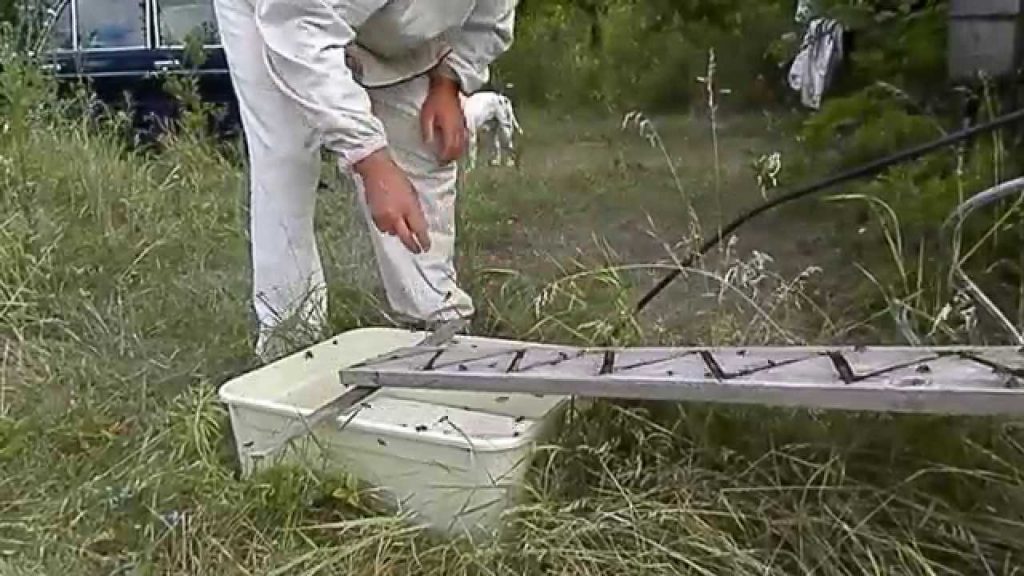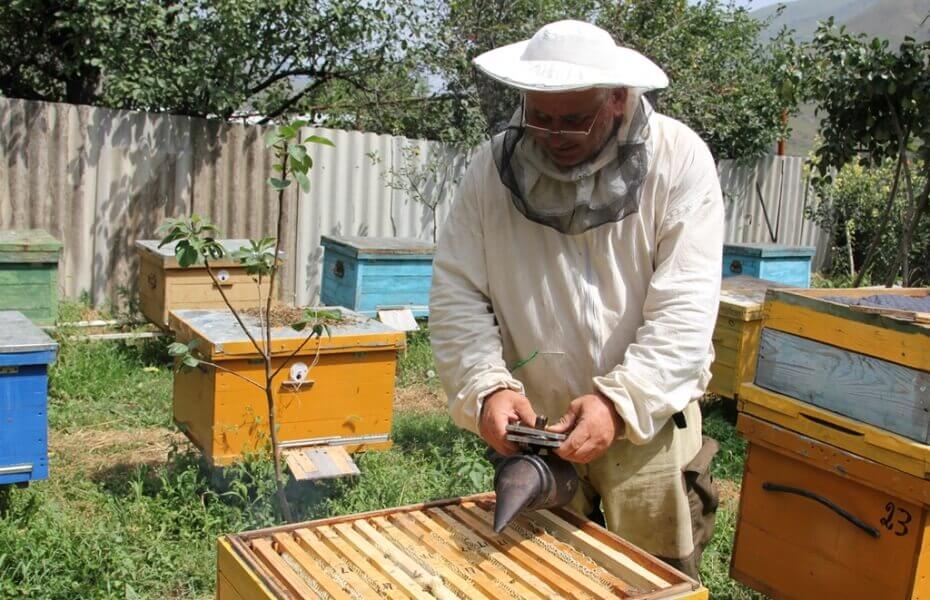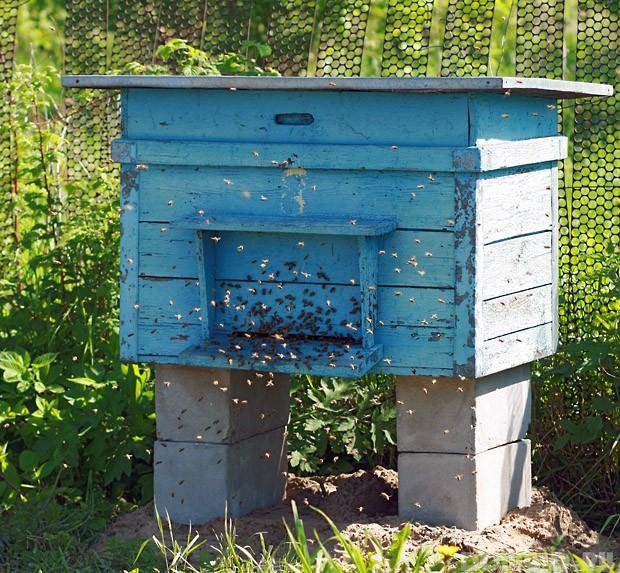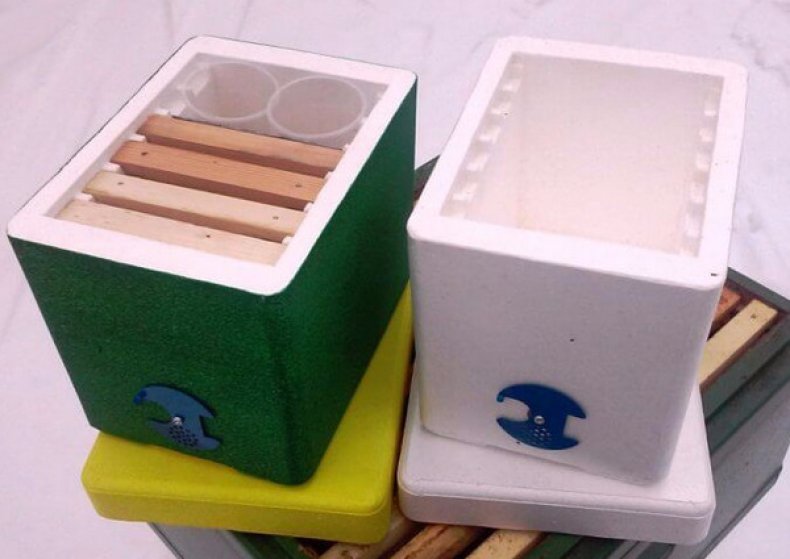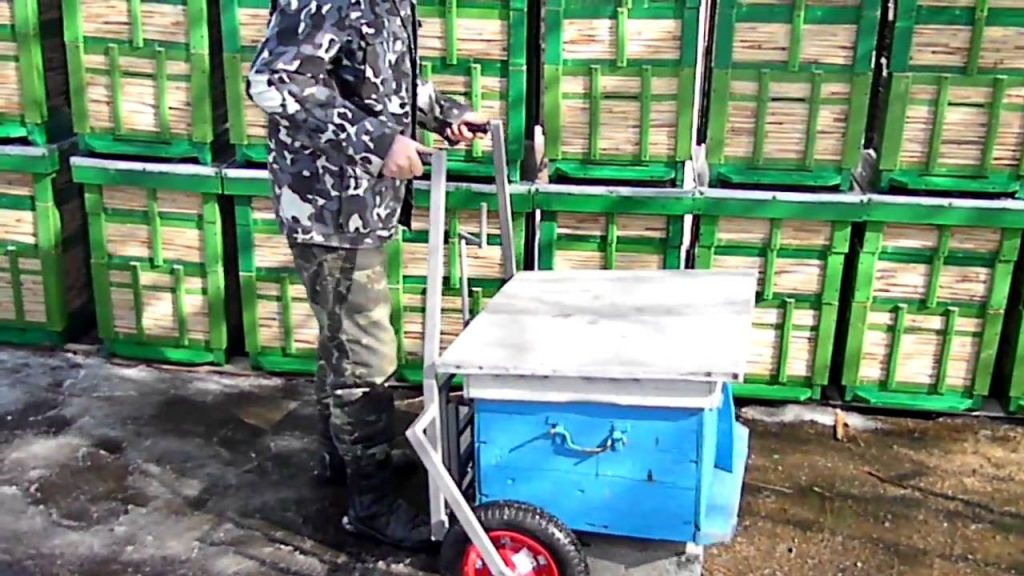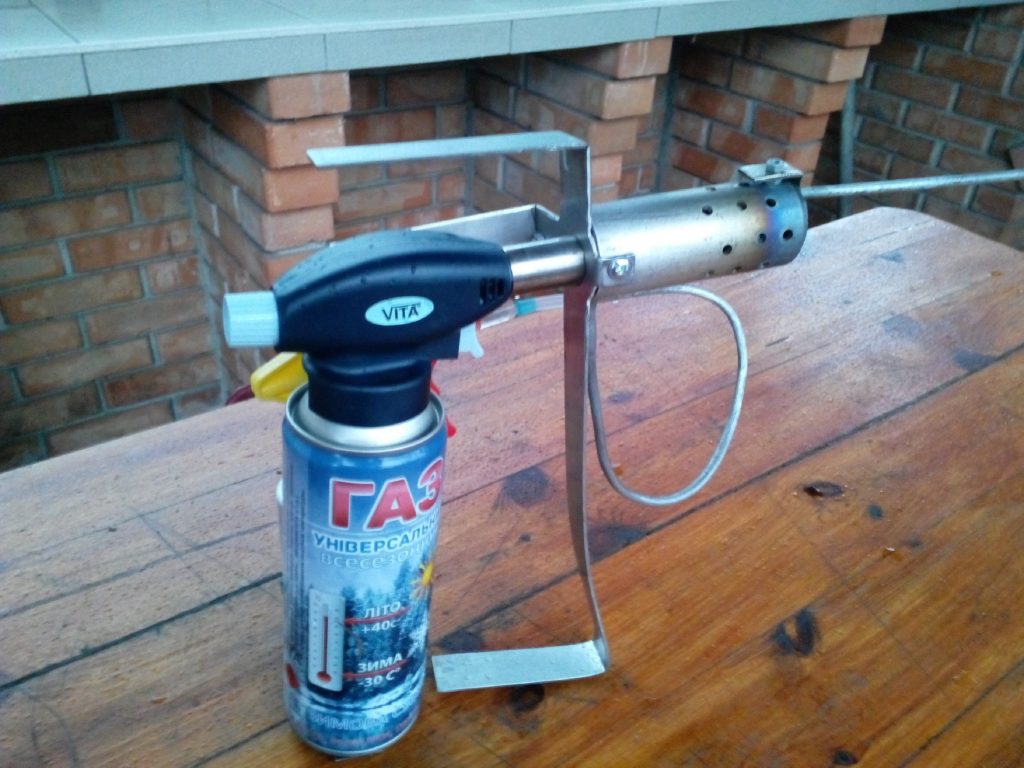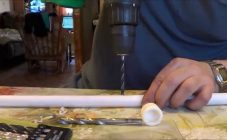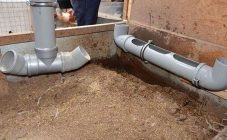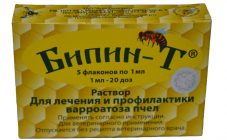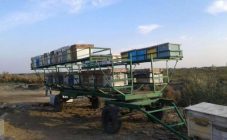Content:
Breeding bees is not an easy process. In addition to the efforts that need to be made, you cannot do without certain equipment and fixtures. First of all, you will need a drinker for bees, a bee house, a smoker, a dividing grid, a cushion for warming, a lift, a cart for transporting beehives and cores. They will be discussed below.
Drinker
A bee drinker is a special device in which an insect can find clean water at any time to ensure its own life. Such drinkers can be of two types:
- individual (separate for each hive);
- common (for the entire apiary).
The drinker can be purchased ready-made or made independently - this device does not require any special skills and abilities. The most important thing is to meet some significant requirements.
Firstly, the device should be installed in an open place so that the sun maintains the temperature of the water throughout the day. Secondly, it is easiest to shield the drinking bowl from the wind with a screen.
It is especially important to create a thin mirror of the water. For this purpose, various means can be used:
- corrugated flooring with a slope;
- a low flat container with rafts on a thin water layer;
- wide flat container with water and moss, etc.
Whichever option is chosen, it is important to provide the bees with some stable, hard surface on which to sit. Water can come in any available controlled way, for example, from plastic bottles, additionally installed brackets.
When making your own drinker for bees, it is important to understand that insects will fly not to every device, but only to the one that seems convenient to them.
How to make a smoker
The bee smoker takes a special place among the beekeeper's tools. It is for this reason that the choice or manufacture of this device should be given particular close attention. With a bee cigarette lighter, insects are soothed and tamed. After being treated with smoke, they hide in the hive as deep as possible, and do not show the slightest aggression towards a person. Often a smoke bee cannon is used to treat honey insects by supplying medicine to the bee house.
If desired, a bee smoker can be made by hand. To do this, you need to take two cylinders of different sizes, which have a bottom, but do not have a top. Experts recommend focusing on similar dimensions: a diameter of about ten centimeters (plus or minus a few centimeters).
It is very important that the inner cylinder freely fits into the outer one, which, when the product is ready, will function as a body. It is in it that you need to make holes: in the lower part and on the sides. They will work like a chimney.
From the inside, small metal rods can be welded to the bottom. They will create additional free space required for air supply.
In addition to the above, it is imperative to provide a hole in the lower part in the smoke. It is necessary to provide fuel injection. In the same place, further fasteners for furs are installed.It is secured with aluminum rivets. It is recommended to use similar fasteners to secure the proboscis.
Bee house and dividing grid
When arranging an apiary, special attention should be paid to the construction of a bee house and a device such as a dividing grid for bees.
In the wild, bees organize nests in various natural objects: in the ground, hollows and other similar places. When breeding honey insects at home, people have to deal with the manufacture of bee houses (hives). This structure can be purchased ready-made or made with your own hands.
Modern beekeepers prefer to use two main types of bee houses:
- vertical (consisting of several buildings with roofs, bottom, roof caps, stands and frames);
- horizontal (in appearance most of all resembling an ordinary box).
Before starting production, you need a diagram, even better - a drawing. When choosing the specific size of the box for bees, all the features of insect keeping should be taken into account.
Some people consider bees to be rather unpretentious animals. But practice shows that this is absolutely not the case. Therefore, it is strongly recommended to create the most comfortable living conditions for them.
A house for bees must reliably protect against negative environmental conditions.
Be sure to take into account the possibility of unhindered access to the beekeeper's dwelling.
The dimensions of the houses should be selected "with a margin" so that there is a possibility of expanding the volume of the hive when offspring appear.
Dividing grids for bees can be of three main types:
- from metal plates with perforation (outdated version);
- wire (the safest and most practical, despite the fact that they have been used for more than a decade);
- polymer (modern modification, which is the easiest to find on sale).
The size that the frame for the trellis should have should be selected depending on the size of the hive. As for the design of the lattice itself, it must take into account the difference in size between different members of the bee colony. The fact is that queens and drones are larger than worker bees, and in order to keep them in a specific area of the nest, a spacer in the form of a lattice with holes is required. The hole diameter can vary from 4.1 to 4.5 mm, depending on the manufacturer.
The grill is installed in such a way that the slots are located along the streets.
DIY nucleuses
Nucleus is a small beehive designed to populate a small bee colony, the strength of which does not exceed two frames. It is necessary to accommodate young queens in order to preserve them throughout the winter period and during fertilization.
The structure can be bought ready-made or made by hand.
In order to make do-it-yourself bee cores, drawings are the first thing you need. From the materials you need to prepare the following:
- expanded polystyrene sheets 20 mm and 30 mm thick;
- self-tapping screws;
- glue;
- stationery knife;
- ruler;
- screwdriver.
The production of the core itself involves the following stages of work:
- All the necessary details are marked on sheets of expanded polystyrene, in accordance with a previously prepared drawing (cut along a ruler using a clerical knife).
- On the surfaces that need to be glued, glue is applied, the parts are connected and for reliability they are fixed with self-tapping screws.
- Entrances for bees are cut out on the walls.
- From the inside of the hive, folds are cut out for the frames and fastened with plastic corners.
- The structure is left to dry.
- If desired, the core can be painted.
During the construction process, it is important not to forget to divide the hive body with three partitions into four identical compartments (each into three frames).
On both sides, the partitions are fixed with self-tapping screws. The thickness of the case should be 30 mm, the rest of the parts are cut from a 20 mm sheet.
The cover is allowed to be made so that it simply fits on top.
The frames must be additionally covered with plastic wrap. It is more expedient to use separate pieces of film for each separate compartment.
A carrying handle will also be useful, but it is not an obligatory step in the construction of the nucleus.
Due to its light weight, such a miniature hive is easily transported, all that is required is to take it under the bottom.
Lift and trolley
Getting started with beekeeping, among the main equipment for work, you should purchase a lift and a cart for transporting hives. These are irreplaceable devices, which no beekeeper will be able to do without. The trolley lift can be purchased ready-made or made on its own.
Option I
The first method of making a do-it-yourself hive cart according to drawings is in many ways similar to making an ordinary cart for household needs. All it needs is a wooden base to hold the bee hives, a handle, a metal base and an axle with wheels. It is better to install the wheels larger - this will increase the permeability of the device.
Option II
The second option is more convenient to use, since with the help of such a design, the hives can not only be transported, but also raised. Such a lift cart consists of a metal welded frame, to which an axle with two wheels is attached (wheels from a children's bicycle can be used). The vertical frame posts in this design will be guides. It is to them that the fork rollers should be welded for lifting.
It is simple to work with such a cart: you need to bring it with the front side to the hive, put a fork under the house, tilt the device towards you and thus raise the hive, additionally using the handle and cords.
Smoke cannon for processing bees
Another irreplaceable device in an apiary is a varomor, or a smoke cannon for processing bees. This device should not be confused with a bee remover. A smoke cannon is used to treat insect families with drugs to protect against ticks and a number of other diseases. With the help of the device, processing can be performed with minimal effort and time.
The design can be purchased ready-made or, like many other things (for example, a heat chamber for bees), made by hand. You can assemble the device in just a few hours. As a rule, components from burners, blowtorches, oil tanks and other materials at hand are used for work. Practice shows that home-made smoke machines are often more convenient than factory ones.
Bee frame making machine
You cannot do in a bee farm without a bee frame machine. In theory, blanks for frames can be made by hand using a fine-toothed saw or an electric jigsaw. But, if you get a woodworking machine, the work will be greatly simplified, and only a few simple movements will be enough to make the frame.
Some craftsmen manage to build the machine themselves. But this should be done only with the appropriate skills. In addition, one should not forget that hand-made equipment, just like the factory type, must be grounded without fail.
As for the dimensions, they are chosen, depending on the needs of the beekeeper himself. In most cases, the choice is made in favor of compact equipment, which can not only be easily moved around the workshop, but also, if necessary, transported to another apiary.
Beekeeping is an interesting activity, but before starting an apiary, it is worth acquiring everything necessary for its normal functioning.
